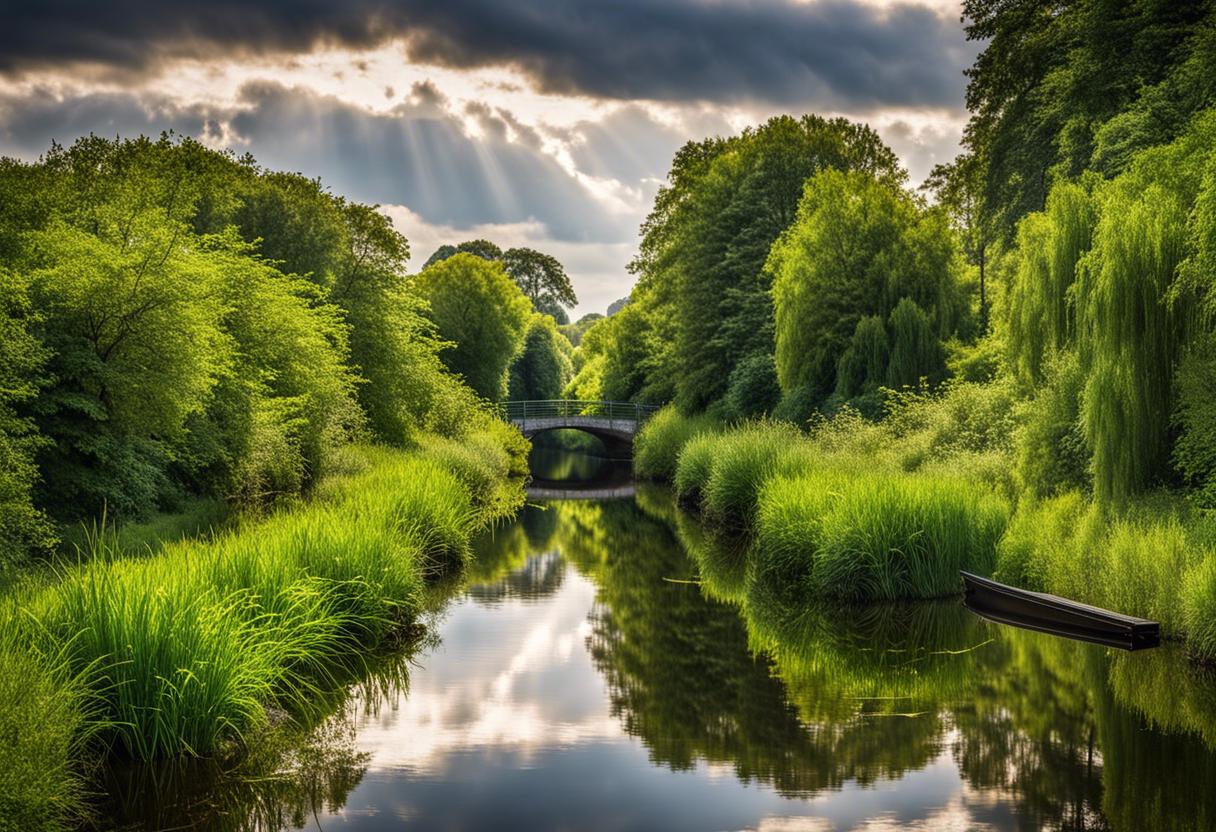According to the Taoiseach, the rejuvenation of the Ulster Canal signifies the positive effects of the peace process and is poised to bring about significant transformations. On a sunny day in Co Monaghan, Simon Harris made an announcement to a crowded assembly at Clones marina that phase two of the major €28.4 million cross-border initiative had been successfully achieved. He stated that this project was an integral part of the lives of local inhabitants.
A revitalised 1.5km span between Clones and Clonfad was inaugurated with people riding water bikes, as onlookers lined up to get free ice-cream near the freshly constructed greenway. The Ulster Canal, originally erected in the 1800s and later left derelict in the lead up to the 1930s, traverses Armagh, Fermanagh and Tyrone in the north and Cavan and Monaghan in the south.
Micheál Martin, the Tánaiste, was in attendance at the Wednesday event, revisiting two years after his previous visit when the site was still devoid of water. He marked this achievement as a substantial tangible delivery of one of the primary goals of the Good Friday Agreement.
The massive scheme was financed by the government’s Shared Island fund, and Waterways Ireland managed its redevelopment. They described reinstating this previously unused water link as one of their biggest engineering challenges.
The first phase led to a 2.5-kilometre segment of the canal from Upper Lough Erne in Co Fermanagh to Castle Saunderson’s International Scout Centre in Co Cavan being restored. The goal of phase three is to link the first two phases, enhancing the area as a popular tourist destination, with the provision of new water-centric activities and paths for walking and cycling between Clones and Clonfad.
With the expectation of phase three’s potential to connect Clones to Upper Lough Erne and all other navigation routes throughout Ireland, Harris anticipates a transformative impact that would make it feasible to traverse from Limerick to Clones via the Shannon-Erne system and Lough Erne in Fermanagh.
An initiative, which epitomises the outcomes of the peace process across the border region including Co Monaghan, is bound to provide long-lasting advantages for future generations. This project is a reflection of unity and reconciliation across our island.
Initiated by the Clones Development Society in the late 1980s, this process aimed at reopening the deserted 19th Century Canal Stores situated on its sides. This building has now been transformed into a visitor centre, a museum, and a café, where visitors can explore features such as Clones lace which gained prominence in the 1850s as an element of community-building post the famine era.
The Taoiseach commended locals for maintaining their belief in the canal restoration, a project which was discussed over several years. He also honoured recently deceased Ollie Murphy, an excavator operator involved in the restoration project.
Some other significant attendees were Stormont Minister for Infrastructure John O’Dowd, Junior Minister in the Executive Office Pam Cameron, along with Government Ministers Darragh O’Brien, Heather Humphreys, and Minister of State Malcolm Noonan.
In response to media queries outside the Ulster Canal Stores Visitor Centre, Ms Humphreys mentioned that the redevelopment signified reconciliation and was a project meant to leave a meaningful legacy. Having lived only a short distance away, she remembered the times of adversity in Clones that have now been surpassed. This project, according to her, symbolises the progress made and future direction to be taken, focusing on cooperation, removing barriers and collective effort.

